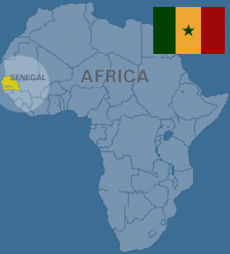
Email: nadege.preston@hotmail.com
Total Article : 82
About Me:Hi I’m Nadege and I study French at the University of Leeds, and I have just completed my third year abroad in Montpellier studying literature and enjoying the sunshine! I love art; painting and being creative, as well as photography and baking. Travelling is my favourite hobby at the moment; experiencing the French language and culture. I hope you enjoy reading some of my articles!

The struggle in Algeria continues as although a national language has been created; Arabic, the ‘Arabisation’ policy has proved to cause tension and conflict. This is due to the fact that it disregards the familles de langues. Furthermore, it is evident that Algeria has yet to find its voice as the on-going struggle continues. The nation is resisting the French language, whilst also wanting to move forward into modernity, which causes conflict as the status of languages play a significant role in whether they are recognised. Tamazight has been disregarded, causing further conflict and demonstrates that the country’s language policy has not been effective enough to counteract the complex linguistic situation.
For a deeper analysis on the linguistic diversity in Africa, I will now discuss the country Senegal, a West African country, and its linguistic situation. The country has seven major languages including French, as well as other languages which continue to be recognised. The linguistic situation reflects higher language diversity than in Algeria. However, there is a more effective language policy in Senegal and this means that the status of languages are not of as great importance. Consequently, there is less competition between the languages, and they do not aim to gain recognition over one another, like in Algeria. Though French is Senegal’s official language, it shares its position as the legitimate language with six other prominent native languages. These are; Wolof, Serer, Alpuular, Mandingo, Diola, and Bassa. As a result, there is less conflict and fewer divisions in the country as Senegalese policy makers realised that if French was the sole language of Senegal, it would create cultural tensions. Each of the major language varieties of the country are adopted in aspects of the Senegalese culture and institutions, which shows how a policy consisting of many languages can create national unity.
In fact, all the official and written business is carried out in the official language being French, and therefore knowledge of French is important for means of communication in official sectors. However, in everyday life, outside the official realm, the French language is not necessary. For example, for communication in day to day life the indigenous Senegalese language varieties are used, therefore French very quickly loses importance, and is only vital for the official sectors. The Senegalese language policy therefore takes into consideration each famille de langue, and they each have a place in society and are not ignored, unlike in Algeria. The language policy in Senegal permeates all level of interactions and does not eradicate any culture. There are less cultural tensions and the country represents national unity and though the French language still has an important place in society, it does not define their culture.
IMAGE URL
https://albatrossic.files.wordpress.com/2012/08/map_senegal.gif

0 Comment:
Be the first one to comment on this article.